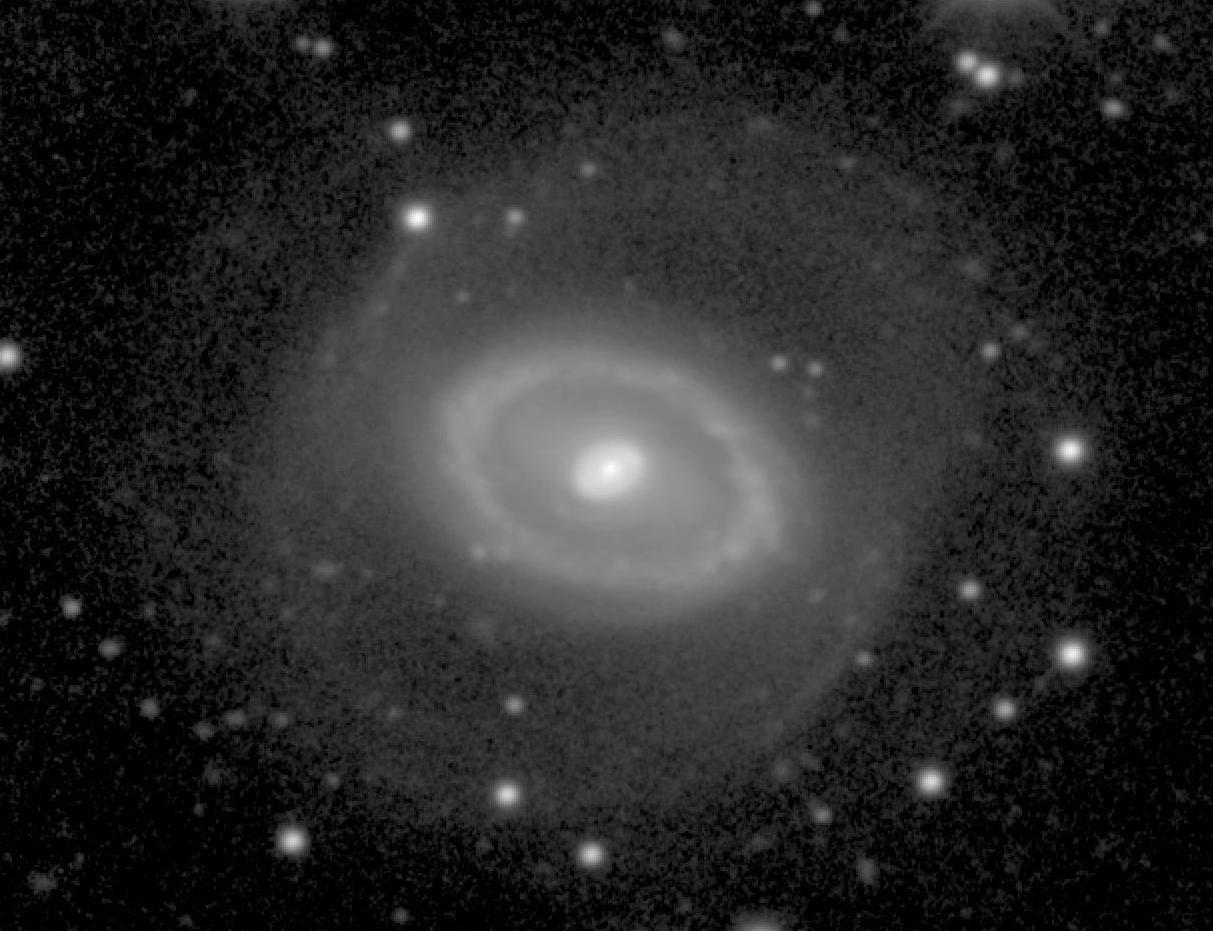

De Vaucouleurs Atlas Type: (R1R2')SAB(r)0/a
Filter: B
Telescope: CTIO 1.5-m
North up , East left
Field Dimensions: 6.1 x 4.9 arcminutes
RC3 Type: (R)SAB(r)0/a
RSA Type: SBa(s)
Surface Brightness Range Displayed: 18.0-28.0 mag per square arcsec
Absolute Blue Magnitude: -20.0
De Vaucouleurs Atlas Description:
This remarkable object, inclined less than 35o to the line of sight, is the prototype resonance ring galaxy. The system has four clear ring features. In the central region, a bright nuclear ring is found. Although well-defined in blue light, the feature stands out best in the B-I color index map as a sharp zone of enhanced blue colors. Inside the ring, there are a secondary bar , a Seyfert 2 nucleus, and two bright stellar associations that are all seen better in the HST image, which is from Buta, Byrd, and Freeman (2004). Outside the nuclear ring, a relatively normal bar is found, but its contrast is so low that it only merits recognition as an SAB type. The B-I map shows that the bar region includes weak, curved leading dust lanes , and that these wrap around the nuclear ring. Surrounding the bar, an unusually strong inner ring is found. This feature is elongated more towards the bar axis than is the nuclear ring, and is a zone of active star formation. In a study of the star formation in the inner ring , Buta, Byrd, and Freeman (2003) showed that individual ring clusters are more highly concentrated and tend to be more luminous within +/-60o of the bar major axis than around the bar minor axis. This is due to the significant intrinsic elongation of the ring. Just outside the inner ring , weak spiral arcs are seen.
In the outer parts of the galaxy, an especially good R1R2' outer ring /pseudoring morphology is found. The R1 component is bright and slightly dimpled in the zones along the bar axis. In the B-I color index map, the outer edge of this feature shows enhanced blue colors. Breaking from near the major axis of the R1 ring, two faint spiral arms form an R2' pseudoring.
In a deprojected image with a background exponential disk removed (Buta and Purcell 1998), only the rings and nucleus remain. This image shows the alternating alignments of the four rings with respect to the bar. The nuclear ring is at a large angle to the bar, the inner ring is parallel to the bar, the R1 ring is perpendicular to the bar, and the R2' ring is largely circular. In the linear epicyclic approximation , which may be approximately valid for the weak bar seen (Byrd, Freeman, and Buta 2005), these alignments are consistent with resonance interpretations of ILR , UHR , and OLR for the nuclear ring, inner ring , and outer rings, respectively.
The S0/a classification is based on the the presence of weak spiral structure breaking from the inner ring and the two faint outer arms forming the R2' outer pseudoring . Most noteworthy is the very small size of the bulge compared to a typical S0/a galaxy.